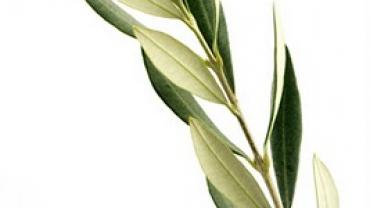
Olive leaf has such a long history as a botanical that one may say it is an herb of biblical proportions. For one thing it is the first botanical mentioned in the Bible. Near the end of Noah's epic voyage a dove appeared to him carrying an olive leaf in its beak indicating that dry land was close at hand and signaling the conclusion of his extraordinary journey.
The ancient Egyptians regarded the olive leaf as a symbol of heavenly power using the extracted oil to mummify their kings. While I personally have every intention of being mummified (of course strictly following local and state mummification guidelines) upon my demise the medicinal use of olive leaf has evolved considerably since the time of the great Pharaohs.
Therapeutic advantages
Today olive leaf extract and its primary active constituent oleuropein are known primarily for their antimicrobial properties including activity against a vast array of highly pathogenic bacteria and viruses. These include Staphylococcus aureus Escherichia coli MRSA HIV-1 and viral hemorrhagic septicemia rhabdovirus (VHSV).
In the case of HIV-1 oleuropein and its main metabolite hydroxytyrosol are the key anti-HIV components. They are active against multiple stages of the HIV-1 life cycle inhibiting cell-to-cell HIV-1 transmission while similarly in VHSV olive leaf extract was shown to inhibit cell to cell membrane fusion between infected and normal cells.
In Europe especially one property of olive leaf that currently receives a lot of attention is its ability to modulate hypertension. Olive leaf acts as a calcium channel blocker preventing calcium from entering cells of the heart and blood vessel walls relaxing and expanding blood vessels which results in lower blood pressure.
The utility of olive leaf extract does not stop there. It also demonstrates antinociceptive characteristics. In animal models of diabetic neuropathy olive leaf was shown to ameliorate neuropathic pain by inhibiting caspase-3 activation. Caspase-3 is a protein responsible for among other things apoptosis or cell death. In a separate study using a completely different model of pain olive leaf in and of itself was shown to exhibit antinociceptive properties and to be useful in overcoming morphine-induced hyperalgesia.
In animal models of metabolic syndrome olive leaf was found to be beneficial by improving or normalizing cardiovascular hepatic and metabolic signs by reversing the chronic inflammation and oxidative stress that induces the cardiovascular hepatic and metabolic symptoms in this rat model of diet-induced obesity and diabetes without changing blood pressure.
A classic symptom of metabolic syndrome is blood glucose/insulin dysregulation which can often lead to type II diabetes. Olive leaf expresses hypoglycemic properties in diabetics possibly through an interesting mechanism of action: the inhibition of starch digestion and absorption.
Olive leaf even exhibits neuro- and brain-protective qualities through models of cerebral ischemia. Histological improvements in brain tissue were observed in laboratory animals pre-treated with olive leaf. This occurred through the botanical's antioxidative properties along with an improvement in the permeability of the blood brain barrier.
Olive leaf has been used as an herbal remedy for gout throughout the Mediterranean region for centuries. It inhibits the xanthine oxidase enzyme responsible for the formation of uric acid excess levels of which contribute the development of gout.
Olive leaf has now become part of my daily supplement ritual. It is a botanical that I believe is largely overlooked but which as you can see has valuable benefits for human health when taken prophylactically or as a therapeutic agent.
by Michael Fuhrman D.C.